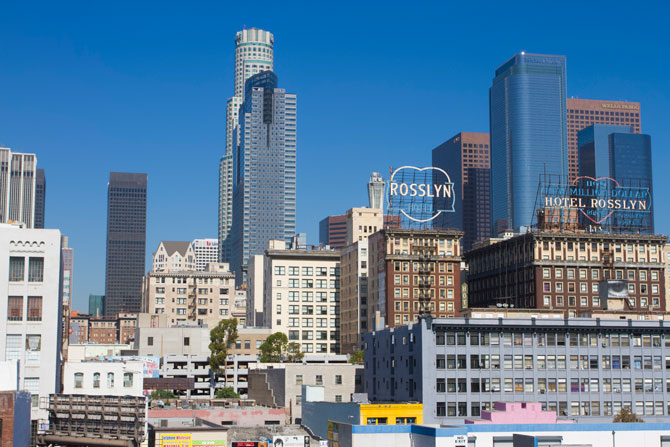Embedded in the 2017 tax reform law commonly known as the Tax Cuts and Jobs Act (TCJA) is an opportunity that can minimize your capital gains tax. The Qualified Opportunity Zone (QOZ) program is a unique tax incentive program for investments in designated low-income communities, known in the program as Qualified Opportunity Zones.
In the greater Los Angeles area, there are 274 designated zones that qualify for the program, including locations in Sylmar, Sun Valley, Northridge, Canoga Park, North Hollywood, Hollywood, Culver City, Downtown LA, and Long Beach. Additional zones are scattered across locations including Bell, Huntington Park, Lynwood, Westmont, Compton, Torrance, and Lakewood. Time is of the essence in taking advantage of the program because it comes with an expiration date—Dec. 31, 2026. Investors who understand how the program works and what types of opportunities may be eligible for the program could realize significant tax savings if they make the investment in 2018.
QOZ BASICS
The QOZ program’s big selling point is the ability for taxpayers to defer the capital gains tax on qualifying investment sales. Virtually any type and amount of investment is eligible for the program, but the arrangement must meet the qualifying criteria.
Capital gains from the initial sale of an investment must be invested into a Qualified Opportunity Fund (QO) fund within 180 days of the sale or exchange. A QO Fund is a corporation or partnership that invests at least 90 percent of its funds into QOZ Property. Eligible QOZ property includes QOZ stock, a QOZ partnership interest, or a direct investment in trade or business (TOB) property of a QOZ Business. A QOZ Business must have a minimum of 50 percent of its gross income derived from the active conduct of a trade or business in the QOZ. Other provisions also apply to determine whether an entity qualifies as a QOZ Business, including a notable restriction: A QOZ Business cannot engage in a certain businesses. These include private or commercial golf courses, country clubs, massage parlors, or other facilities used for gambling, or any liquor store (not including restaurants that serve alcohol, or bars).
Additionally, there is an original use requirement: substantially all of the QOZ business’s tangible property must be purchased after Dec. 31, 2017, and the original use of the TOB property must begin with the QO Fund or the underlying QOZ Business in the QO Zone.
Aside from the original use requirement, taxpayers may also reap capital gains benefits if the QO Funds are used for existing QOZ Businesses, and the investment is used to substantially improve the property (defined as capital expenditures that exceed the original purchase basis during a 30-month period), and substantially all of the use of the property is in a QOZ.
HOLDING PERIODS FOR DEFERRAL AND EXCLUSION
Provided that the above conditions are met for the investment, taxpayers would then be eligible for a generous deferral period for the capital gains tax. The deferral period extends as long as the taxpayer holds the qualifying investment, but no longer than Dec. 31, 2026.
There is no minimum required holding period in order to receive the deferral, but taxpayers have the potential to receive two increments of additional basis in a QO Fund investment. If the taxpayer holds the QO Fund investment for at least five years, the basis bonus is equal to 10 percent of the original gain deferred. This means that only 90 percent of the deferred gain invested in a QO Fund that is held for at least five years would be subject to tax. The second tranche of the basis bonus is available if the taxpayer holds the QO Fund investment for at least seven years, in which case the basis bonus is equal to an additional 5 percent. This leaves only 85 percent of the original deferred gain as ultimately taxable.
Taxpayers also are eligible to receive total gain exclusion from post-acquisition gains in the QO Fund. The post-acquisition gain exclusion is available for QO Fund investments that satisfy a 10-year holding period. Once the QO Fund investment has been held for 10 years, the taxpayer can elect, upon sale of the investment, to have a basis in the QO Fund investment equal to its fair market value. This results in no gain on the sale, other than any gain recognized on Dec. 31, 2026 with respect to the original gain deferral on the existing investment.
EARLY BIRD GETS THE WORM
The QOZ program is structured to reward those who invest early, so investors with interest in projects in the Los Angeles market should move quickly. Many of the benefits are set to expire in 2027, and QOZ areas lose their designations after Dec. 31, 2028. Making an investment in 2018 could result in significant tax savings, particularly if taxpayers can utilize the post-acquisition gain exclusion. Taxpayers who invest in a QO Fund before Dec. 31, 2018 could potentially exclude 15 percent of the pre-acquisition gain, defer 85 percent of the pre-acquisition gain until 2027, and exclude all post-acquisition gain after the investment date.
A tax professional knowledgeable of the program and the LA-area opportunities can help taxpayers make the most of this program.
Jim Parks is an Executive Director in the Los Angeles office of CBIZ and MHM. He has more than 40 years of diversified tax, business management and litigation consulting experience.

